Nathan Marsh is Bentley Systems’ Regional Executive Manager for EMEA. We sat down with him last week in Vancouver, Canada, during the company’s annual Year in Infrastructure event. It was an opportunity to discuss Bentley’s latest announcements, such as the partnership with Google (see our article). We also discussed the rail sector, a key area for Bentley Systems that is expected to grow significantly as projects expand, particularly in the Middle East.
Recent announcements have highlighted significant developments at Bentley: new product offerings, acquisitions, partnerships, and the introduction of carbon analysis capabilities among other things. There seems to be a clear acceleration within the infrastructure space and the Bentley ecosystem, right?
Nathan Marsh: “Yes, the ambition and our response have certainly gained momentum. Infrastructure, both new and retrofit, has never been more critical on a global scale. We’re facing challenges like population growth, an aging demographic, shifting populations, and the climate crisis. Additionally, much of the world’s infrastructure is aging, and while we have excellent examples of modern infrastructure—like railways and highways—many bridges and other key structures need retrofitting, maintenance, or complete replacement. It’s a complex landscape that also ties into broader economic trends. Bentley, as a company, looks at these macroeconomic factors and recognizes that timing is everything—and now is the time to act. For example, the acquisition of Cesium and our partnership with Google have expanded our global reach and capabilities, allowing us to literally “see the world working” through tools like Google Earth.”

Can you elaborate on Bentley’s partnership with Google, particularly how it aligns with Bentley’s goals for infrastructure and how tools like Google Earth enhance your capabilities?
Nathan Marsh: “I think both Bentley and Google share a deep ambition and responsibility toward the world we live in. This sense of duty is a key aspect of our partnership. In terms of capabilities, it’s remarkable how essential an immersive understanding of infrastructure has become. When we look at modern infrastructure, it’s no longer just about 2D or even 3D drawings; it’s about fully understanding the environment—how we design, build, live in, and maintain these assets.
I’ve spent my career looking at drawings, spreadsheets, and CAD models, and while they’re all pretty good, nothing compares to the experience of virtually stepping into a site before construction, seeing it during development, and envisioning life afterward. This immersive experience helps make better decisions.
And who better to partner with than Google, with their digital twin of planet Earth? Everything we design, repair, or build sits within their representation on Google Earth. It’s a completely natural partnership that aligns perfectly with our goals. It’s a serious collaboration, one that I believe holds global importance.”
READ ALSO
Before this partnership, if a city didn’t already have its own digital representation, it might have been challenging to work with them. I recall Singapore being one of the first cities globally to have a digital twin, and it was compatible with Bentley’s tools. Does this partnership now remove that requirement, enabling you to collaborate with organizations, whether cities or enterprises, that don’t yet have their own digital twins?
Nathan Marsh: “Exactly right. This partnership has made our work in infrastructure much more accessible and universal. We no longer need cities to have their own digital twins as a prerequisite to collaborate. Now, whether we’re looking at Singapore, Pennsylvania, Birmingham, or Dubai, we can work within the same platform and ecosystem, accessing best practices from all around the world in one place.
The ability to easily transfer insights across cities and projects without needing a separate digital twin for each location is a game changer. For me, it’s incredibly exciting that you don’t have to move far from your screen or the immersive lab to leverage this global knowledge base. Customers will automatically gain access via iTwin.”
This means more business opportunities for you, right?
Nathan Marsh: “I believe it will lead to better quality business and more impactful outcomes. It ties back to our deep sense of responsibility regarding the projects we work on and the critical assets we engage with—whether it’s water infrastructure, airports, highways, defense systems, or energy sectors. These are all crucial for economic, social, and environmental prosperity, and it’s vital to get them right.”

Let’s move to transportation, a key market for you. Rail projects, in particular, are massive undertakings with numerous stakeholders across many countries.
Nathan Marsh: “Absolutely. One of the defining aspects of transportation, especially rail, is all about making better connections—whether it’s connecting a supply chain to upgrade or deliver a rail asset, a highway, or connecting people to jobs and prosperity. There’s a real sense of purpose behind these projects, which is why transportation is so vital to us.
Strategic rail projects, in particular, are incredibly complex. These large-scale schemes, like High Speed Rail, or the Elizabeth Line in the UK, can span 5, 10, or even 15 years. They involve multi-jurisdictional and multi-currency supply chains. Projects like High Speed 2 (HS2) [a high-speed railway which is under construction in England] or Qatar Rail are so enormous that when they purchase steel, it influences global commodity prices.
So, it’s much more than just a project—it’s an economic force for good. In this sense, strategic rail embodies the kind of transformative infrastructure that Bentley is passionate about. Right now, with the inclusion of Cesium, we believe we have the perfect partner to deliver these projects successfully in 2024 and beyond.”
In terms of business opportunities, does EMEA hold strong potential for rail development?
Nathan Marsh: “Absolutely. We’re seeing growth in both strategic rail, local rail and metro systems globally, including across Europe, the Middle East, and Africa. Continental Europe, especially within the EU, is increasing funding for strategic rail projects. The UK also has significant ambitions, with projects like HS2 and the East-West rail, which aims to enhance connectivity between north-south and east-west routes. Major metro schemes are also emerging, with many localized, city-centric projects supporting integrated transport systems across the UK and European cities.
In the Middle East and Africa, we’re seeing large-scale projects as well, including South Africa’s strategic initiatives and transformative projects in the Middle East like Qatar Rail and Saudi Arabia’s Landbridge, a 15-year project connecting Riyadh to Jeddah. These are unprecedented projects in the region, and their impact on our business is truly exciting.”
In rail, is the focus more on upgrading existing infrastructure or building new systems? Of course, for Qatar and Saudi Arabia, it’s new infrastructure, but what about elsewhere?
Nathan Marsh: “In Europe, the focus is primarily on upgrading—moving from moderate speed to high-speed rail and advancing electrification, which is a major priority. The UK has a bit of both. It’s an aging network that requires significant retrofitting but also includes new developments. Meanwhile, in the Middle East, the projects are mostly new builds, especially with vast desert landscapes to work through. It’s a fascinating mix, with each region having its unique challenges and opportunities.”

Do you find it more challenging to provide solutions for existing infrastructure or new developments?
Nathan Marsh: “Both present unique challenges, but I would say retrofitting, maintenance, and upgrades are a bit more complex. With new infrastructure—like building on a greenfield site such as High Speed 2—you’re working from scratch. It’s about building it right the first time.
In contrast, when you’re dealing with retrofitting or upgrading, you have to “unbuild” and then rebuild. You’re constrained by what’s already there, which can make it more surgical and intricate in nature. But both areas offer great opportunities and funding, so each has its own set of demands.”
How do you see the railway industry and its stakeholders adopting digital technology to manage existing infrastructure?
Nathan Marsh: “We observe a lot of forward-thinking in the railway sector, especially among Tier 1 contractors and prime contractors, as well as engineers and designers, who are leading with a digital-first approach. However, as we move deeper into the supply chain—particularly in Tiers 3, 4, and 5—the level of digital maturity tends to decrease significantly. For example, while on-site workers may have modern tools like iPhones, many still rely on paper-based methods to manage projects. So, we encounter a mixed level of digital adoption across the industry. In contrast, the top tiers, where the main contractors and engineers are found, are much more digitally native and are setting the pace for the rest of the sector.”
Let’s move to another topic: the workforce crisis. Given the labor shortage of engineers and the rise of a younger generation entering the workforce, are you adjusting your business approach to appeal to this new demographic?
Nathan Marsh: “Yes, we’re definitely adapting our approach. A key part of this is our partnerships with companies like Google, Cesium, and Blyncsy, along with our investment in iLab. These organizations, as well as our collaboration with Unreal Engine, one of the globe’s leading game engines, focus heavily on visual and immersive experiences. They are crucial in engaging the younger generation. Today’s younger workforce is accustomed to highly visual, gamified content, and they expect technology to be intuitive and interactive. While I might still find traditional 2D plans exciting, we understand that younger professionals prefer to consume the same data in more dynamic and engaging ways.
So, we’re choosing to work with partners that help us present infrastructure projects in visually compelling formats, making the field more attractive to new talent. This is essential not only for attracting younger engineers but also for ensuring that older generations can clearly understand the impact of the projects. Yes, there is an overall labor shortage. In response to it, we aim to make the infrastructure industry more appealing and exciting for the next generation.”
How are you working to attract new talent, especially from younger generations?
Nathan Marsh: “We’re taking several initiatives to engage younger talent. One major approach is through sponsoring educational content and PhD programs, and by partnering with universities. We also believe that if we can present Bentley’s work in a way that feels like content being streamed on social platforms—immersive and engaging—it will help attract new talent. Additionally, by influencing academic content at an early stage, such as during university courses, we hope to position Bentley as an educational partner. When these students graduate, we want them to view Bentley as a natural choice for their career in infrastructure.”
Are younger generations more receptive to sustainability and building the smart cities of the future?
Nathan Marsh: “Absolutely. In my experience, younger generations are more socially and environmentally conscious than ever before, and that aligns perfectly with our priorities as a company. Sustainability is a key focus for us, and we see this reflected in the mindset of the younger workforce we’re engaging with. They understand the global challenges we face, and they’re passionate about making a positive impact. This is critical because these are the people who will be running our business and managing infrastructure in the years to come. Having such a conscientious team is vital for addressing future challenges across generations.”
What is the current status of the Metaverse? It seems to have fallen out of discussion compared to last year for example. Why is that?
Nathan Marsh: “It’s a slightly philosophical question! The perception of the Metaverse is indeed shifting. While it may seem less prominent in conversations today, the idea of having an incredibly realistic digital representation of assets, cities, or countries is akin to existing in a Metaverse-like environment. In our collaboration with Google, we leverage tools like Google Earth. The question is: is Google Earth the Metaverse?
What we are seeing is a growing interest in the tokenization of assets within this digital space. [Tokenization refers to the process of converting physical assets, like infrastructure, into digital tokens that can represent ownership or value in the virtual realm.] These tokens can facilitate financial transactions and value exchanges in the Metaverse. And organizations are beginning to recognize that the digital twins we create—representations of actual designs and maintenance of infrastructure such as assets like buildings or railway stations—hold substantial value. And this value is not merely symbolic; it’s tangible and can enhance business operations. So, while the term “Metaverse” might not be at the forefront of discussions, its underlying concepts and applications are very much alive and evolving within our projects and partnerships.”
What influenced your decision to hold this edition of the Year in Infrastructure in Vancouver? Previous locations used to be either Singapore or London.
Nathan Marsh: “Vancouver is an excellent choice for this event due to its impressive qualities, particularly its resilience. In today’s context, resilience has become nearly synonymous with the concept of net-zero emissions. A resilient city, like Vancouver, not only strives to be carbon-responsible but also maintains economic viability and social inclusiveness. Vancouver embodies these attributes perfectly, providing a safe and secure environment for mobility and transit. Additionally, the city’s stunning surroundings, with the Rockies nearby, enhance its appeal as a beautiful and vibrant location for such an important event. Overall, Vancouver ticked all the boxes for hosting a forward-thinking infrastructure gathering.”



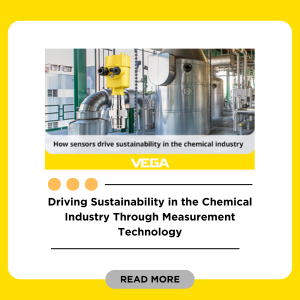

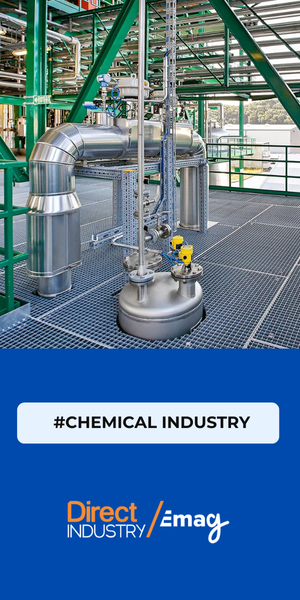
![Image [BUYING GUIDE] How to Choose the Right Industrial Robot?](/wp-content/uploads/sites/3/Industrial-Robot-320x213.jpg)
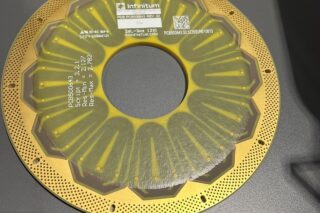
![Image [Buying Guide] How to Choose the Right Safety Shoes?](/wp-content/uploads/sites/3/Safety-Shoes-320x213.jpg)
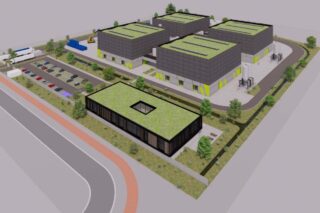
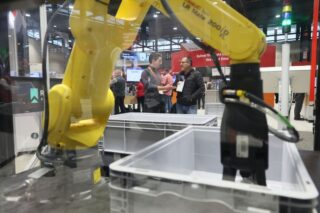
![Image [Buying Guide] How to Choose the Right AMR?](/wp-content/uploads/sites/3/AMR-320x213.jpg)